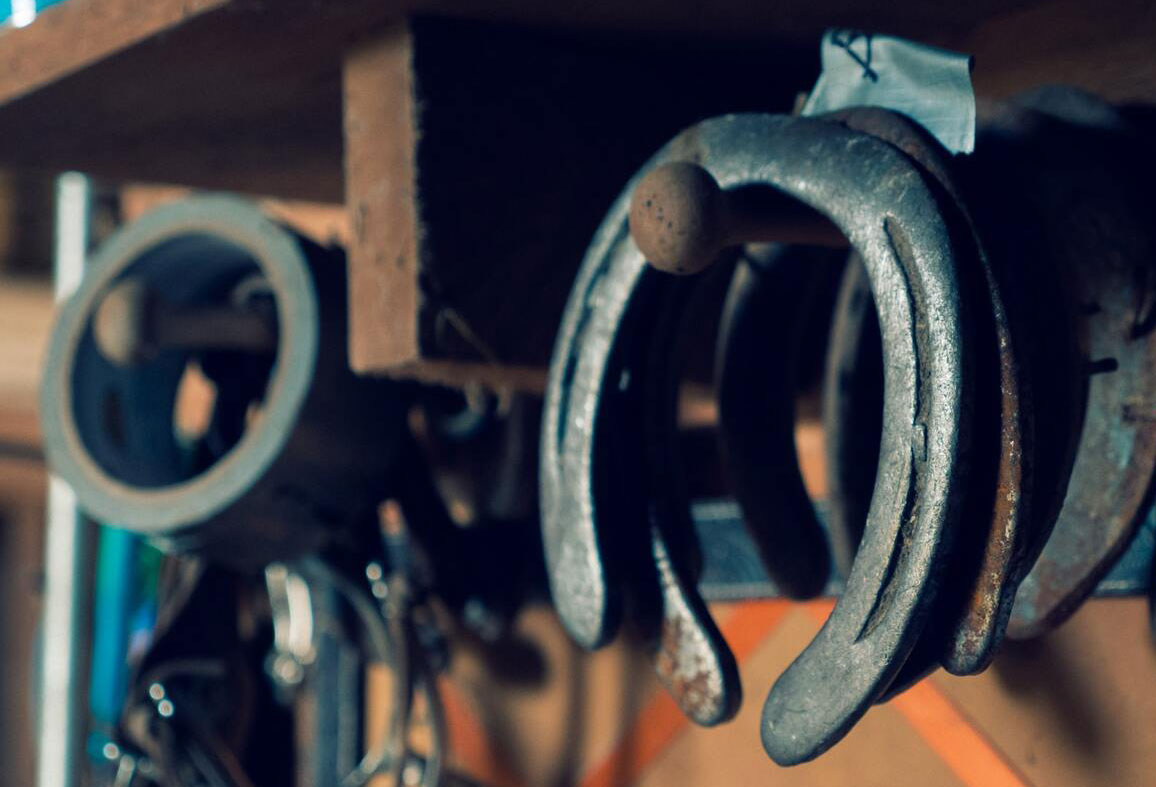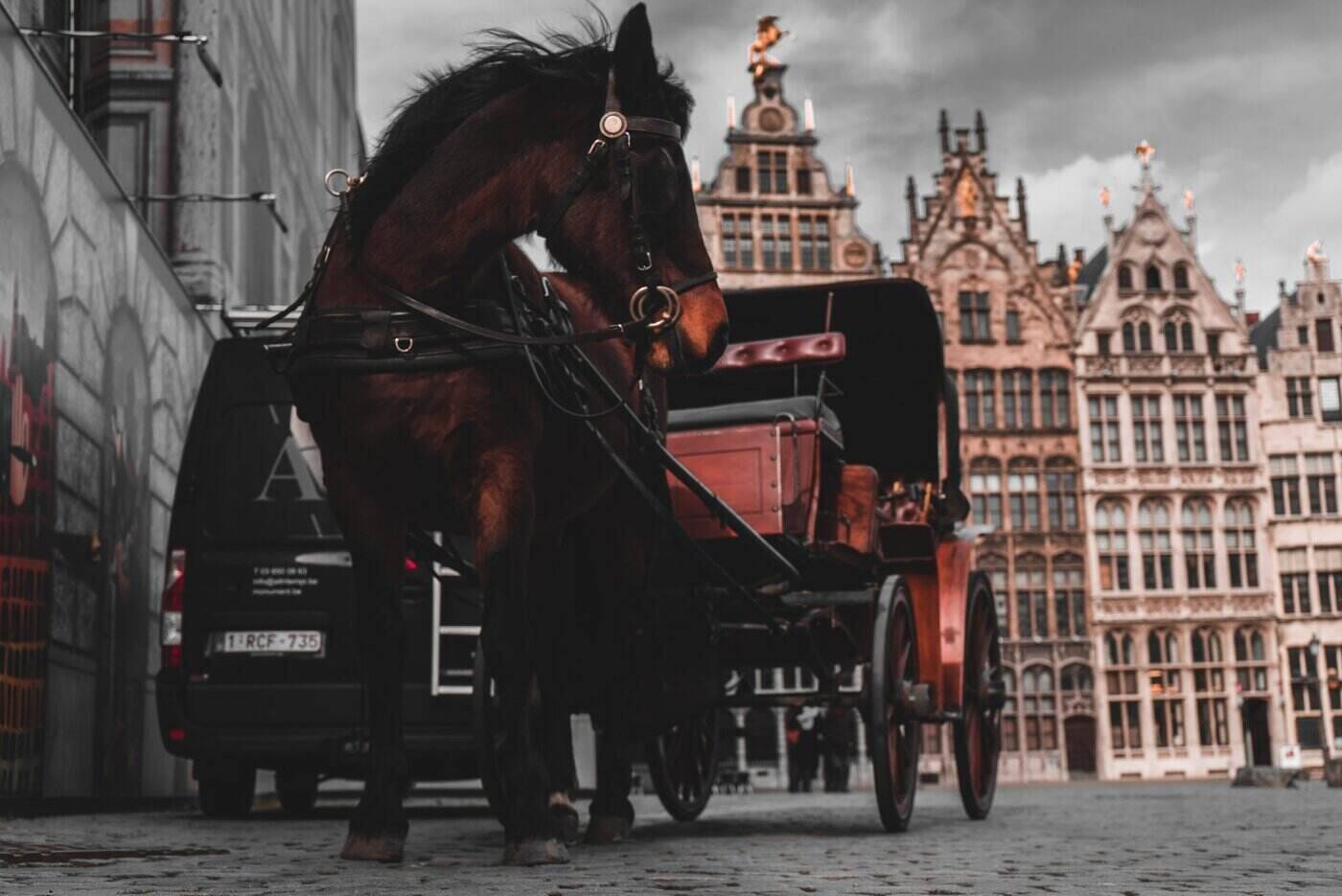There is a wide range of horseshoes, each suitable for different needs and functions. Depending on your horse, and the job they’re being asked to do, appropriate shoeing can be crucial for the upkeep of their hooves so they can move freely.
Improper horseshoes will at worst make a sound horse lame and at best, make the horse less able to fulfill their intended function. For instance, the weight of the horseshoe directly influences a racehorse’s performance.
It is a responsibility of a horse owner to work with their farrier to find the appropriate footwear that meets the specific requirements of the horse and the intended job. This article will give you information that will help you choose the ideal horseshoe for your equine partner.
Do Your Research
First things first, you need to do your research and study your horse’s basic needs when it comes to hoof care and shoeing. It is wise to know what aspects to consider when it comes to choosing shoes, and you can find this information in print books and online guides.
By reading various books, blogs and articles, you can gain ample knowledge to have an informed discussion with your farrier. Even knowing the basics about the different functions of shoes can help you ask the right questions about what will work best for your horse.
How Do Horseshoes Differ?
There are different types of horseshoes with differing features. Horseshoes will differ by shape, material, thickness and width, as well as profile. They’ll also differ in terms of how they’re affixed, i.e. how the nail holes are distributed, whether there are clips and whether the shoe is nail on or glue on.
Most manufacturers will make both front or hind shoes, but not left and right. Consequently, these shoes have branches with the same length and the exact same placement of the holes on both branches.
Shoes that come pre-made are called keg shoes. Unless your horse has distinct needs, these are the kinds of shoes your farrier will shape to your horse’s feet. If the horse requires something unique or special, a skilled farrier will be able to make a custom shoe.
Size of the Horseshoe
Horseshoe sizes are measured in numbers. A “0” is small, and the sizes 1, 2, 3 and so on get progressively larger. Smaller sizes are measured in multiple “00s,” called oughts. A double ought, or “00,” is smaller than a “0,” a triple ought, or “000,” is smaller than a double ought and so on.
Manufacturers of racing, polo, synthetic or proprietary shoes might have their own sizing systems, so what fits in one line of shoes might not be the same in another.
It’s essential for the horse’s health and comfort that they wear the correct size of shoe. Shoes that are too small can be painful, while shoes that are too large risk getting stepped on and pulled off, which can cause damage to the foot.
The size of your horse will roughly determine the size of their shoe. There are always cases of small horses having large feet or vice versa, however, so your farrier will take measurements to find the perfect size for your horse.
If you’re curious, you can get a stencil of the hoof by painting the bottom of the hoof on an animal-friendly dye and pressing it on clean white paper. You can measure the hoof with the imprint or stencil.
The hoof broadens and grows in length during the shoeing interval, so you could see slight changes depending on how long it’s been since your horse saw the farrier.
Your farrier will make the actual choice on the basis of the freshly-trimmed hoof size. If there is a scenario where your farrier cannot find a size that is the right fit, they might switch to another brand, modify an existing shoe or create something custom.
To modify a shoe, the farrier can file or grind the branch-ends to a shorter length. Alternatively, they can extend the branches to create a slightly longer shoe. This is a common tactic when the farrier is faced with mismatched feet.
They may have to opt for using shoes of different sizes if the mismatch is too extreme, as could be the case if a horse has a severe club foot.
The Horse's Build and Job
It is a general rule that the heavier the horse, the thicker its shoes. Thicker shoes will last longer, but are heavier, which is where your horse’s intended use becomes a factor.
Thick, heavy shoes are not ideal for sport horses like jumpers, for example, even if the horse is larger and stockier. A thicker steel shoe would be called for, however, for carriage horses.
Lighter horses like thoroughbreds, who need to race, will wear the lightest weight shoes.
For everyone else, the type of shoe that will serve them best will depend not just on their build and on the type of work they’re doing, but how often they’re working, and what types of surface they’re usually working on.
The needs of a dressage horse in training, who does difficult work in sand footing, will be very different from a trail horse who’s ridden on the weekends, but needs to navigate stony terrain.
Your farrier will help you to sort through the best options once they know the details of your specific situation.
Stamped or Fullered Shoes?
Stamped shoes, which are flat shoes with no crease, are rarely used anymore. Sometimes farriers will opt for this type of shoe for heavy breeds like draft horses. Reining horses also wear this kind of horseshoe.
Fullered shoes, which are shoes with a crease through the centre, are preferred these days. This shoe is easier to shape, whether a farrier is hot shoeing or cold shoeing, so it’s more versatile to work with. Moreover, these shoes are lighter and provide better protection against slipping.
Material of the Horseshoe
The material of the horseshoe is an essential aspect to bear in mind. Steel horseshoes are mainly used for riding and driving horses. Aluminum shoes, which are lightweight, are typically used for racehorses.
The market for horseshoes made with synthetic material has grown quite a bit in recent years. Some people rely on them for their slip-resistant and shock-absorbing qualities. They’re more difficult to fit, however, and they remain quite expensive, so you’re less likely to encounter them (or a farrier who works with them).
Final Words
When your horse needs shoes, it’s helpful for you to know not just what shoes are available, but why they’re made the way they are and what they’re used for. This will help you help your farrier come to the right decision about what will work for your horse’s well-being.
Written by contributor
Feature image: Chris Bair; Image 1: Jonas Jaeken







.jpg)

